Thousands of years ago, in the far-east, worshippers of the five elements of nature lived in a valley. It was a land which was lush green and surrounded by five rivers! In other words, this was the earliest known civilisation on the face of the earth, the Indus Valley civilisation. The Ancient Vedas mention them. Passed down from generation to generation orally, the Vedas were scriptures with no written texts! Therefore, we can say that they were the primogenitors responsible for the Indian Saree coming into existence.
The existence of the Indian Saree
These people were not cavemen or wanderers. That is to say, They settled in a valley, cultivated crops, reared cattle and prayed to the five elements. Furthermore, their society had an education system, and they clothed themselves in a very unique fashion. This particular community designed the precursor of the modern Indian Saree, which became popular globally, and is still in existence today.
The citizens of that community believed in a single, unstitched piece of cloth as the pure. To clarify, they believed stitching cloth to be impure. Therefore, according to their gender, they either wore a loincloth or a saree. The cloth was either four, or upto eight meters of single piece of woven cloth.
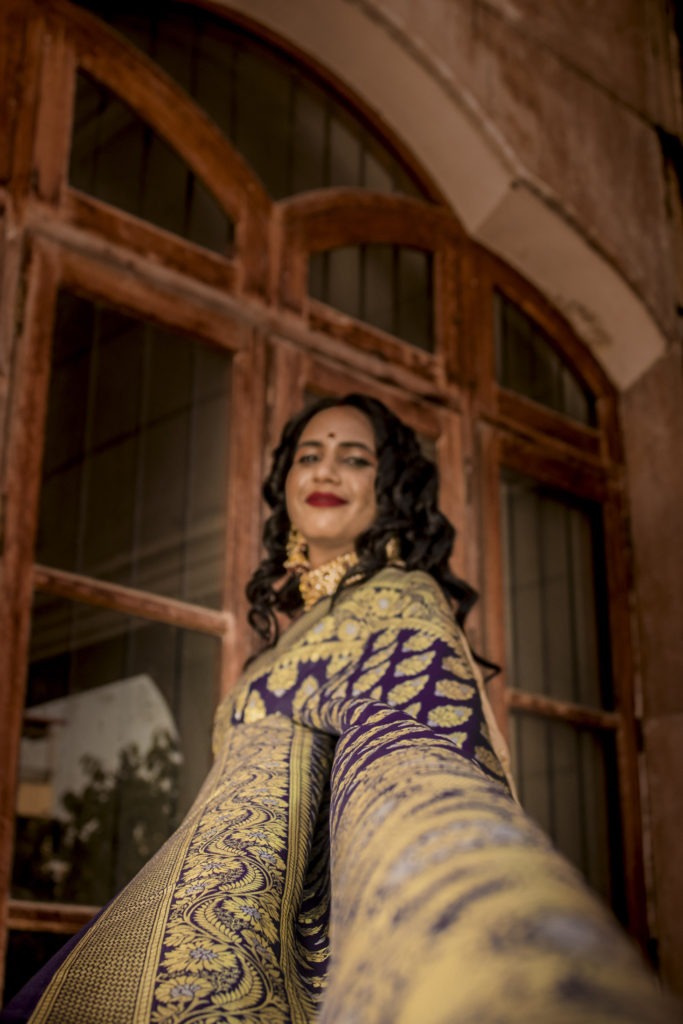
They draped the piece of cloth around the lower body with tactful pleating, and then folded across the upper body. The women’s mid-riff would be left revealed. Meanwhile, the men normally wore the cloth around their lower body, and bore their chest open. Both the men and women maintained their figures wonderfully, and they had beautiful physiques.
Saree as a Clothing
The saree has the ability to keep the body warm during winter and cool in summer. Above all, it has a stylish and elegant appearance, and is superbly aesthetic. It had around 80 variations across the South Asian Subcontinent. At the later stages of civilisation, in what is now the Indian sub-continent, it evolved into different kinds of weaves! Currently, the Indian saree is the most culturally important attire for the ladies living in India.

Royal Banarasi Saree
Some of them, for e.g, are the Banarasi, Taant, Kasavu, Kanjeevaram. There are further evolutions like the Bomkai, Sambalpuri, Paithani, Bandhini, Muga, Pochampally, Chanderi, Kornad, Leheria, Phulkari, Chickankari. There are more from each and every state of the Indian nation.
This particular saree that I’m wearing is a Banarasi weave from Varanasi, and this is a world famous weave. The Royal Blue colour oozes out regality, and brings out the modern aesthetics, while also honouring Indian Heritage. It perfectly showcases traditional skill and craftsmanship.
Julaaha means weave in Hindi, and skilled artisans have beautifully handcrafted this particular saree using the Jacquard Technique. Julaaha, the brand is synonymous with exclusivity and high quality, with a huge collection of coveted embroidered and brocade sarees!
When I received this beautiful saree in a gold box, it felt like I had received a royal treasury from a Maharaja of the yesteryears! And then, when I draped it and stood in front of the mirror, it felt like I was the Queen of the world. With my husband wearing a matching Sherwani, it indeed felt like we had a crowning ceremony to attend in our Durbar!
This beautiful saree from Julaaha has taken my heart away. Do check out Julaaha’s beautiful embroidery, brocades, jacquard sarees for women from all around the world.
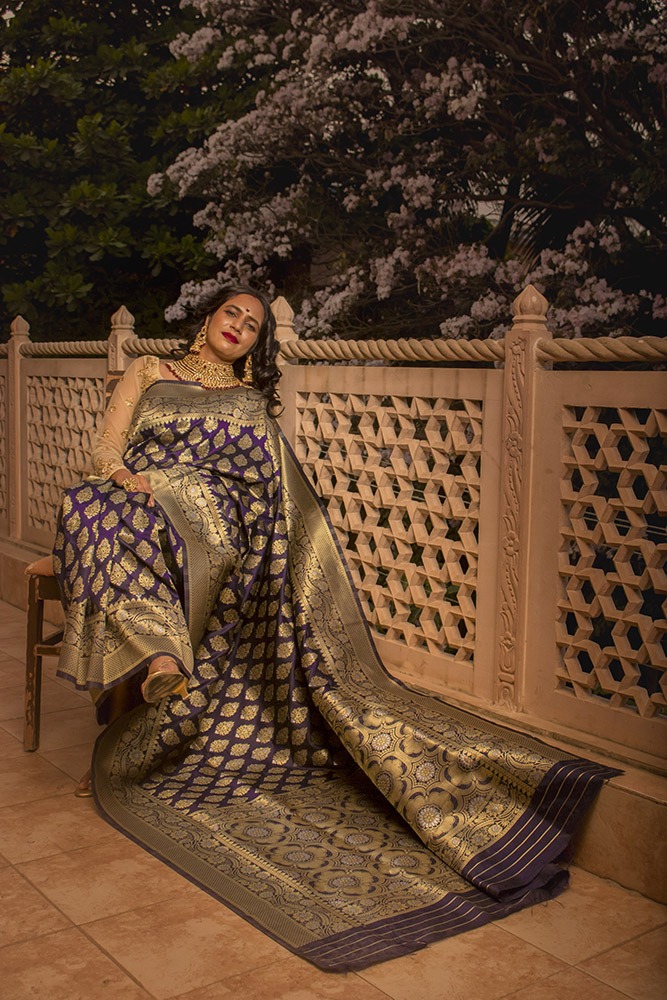

Beautiful Couple in Indian Wear

Royal Indian Saree

Royal Couple

Woman wearing Royal Indian Saree
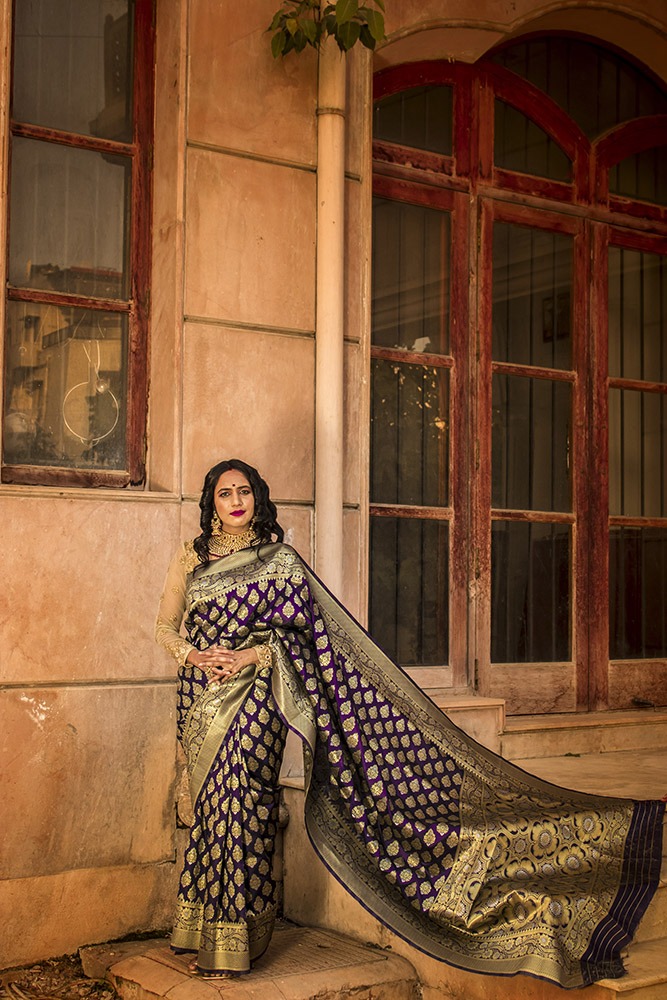
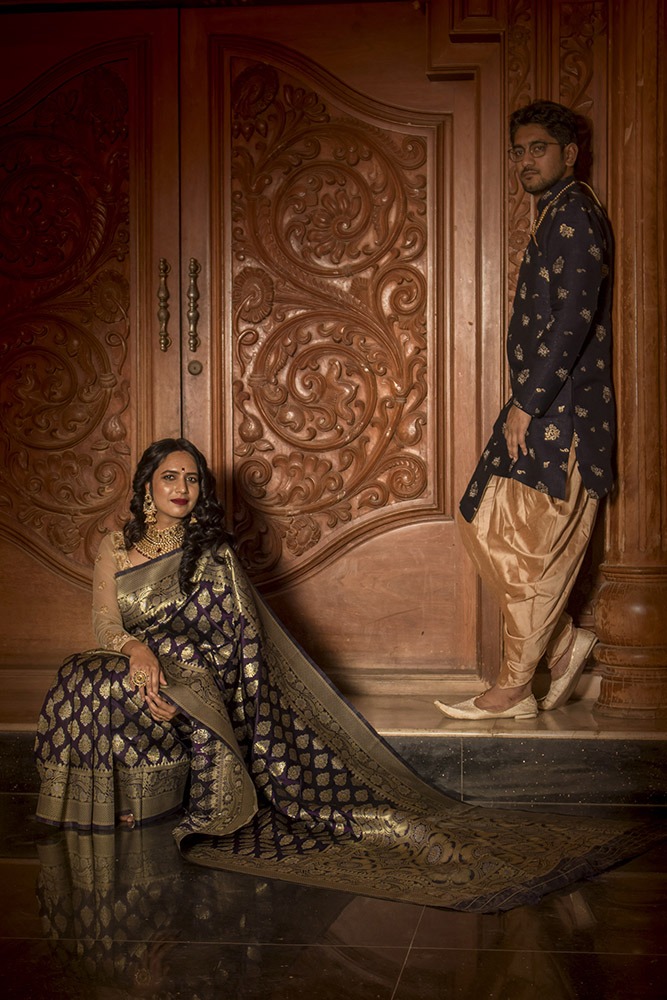


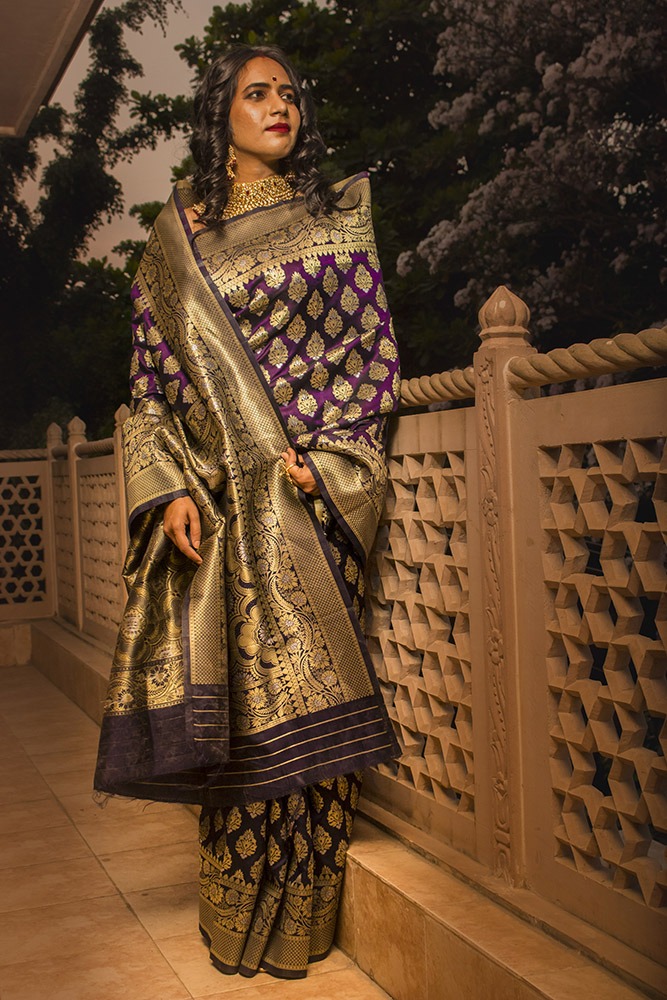
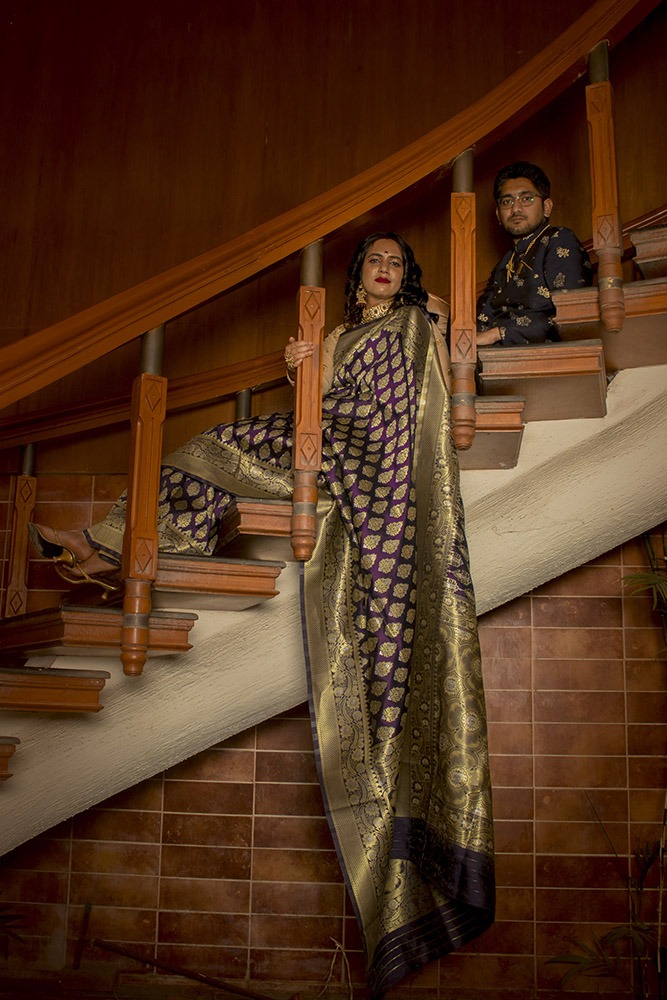
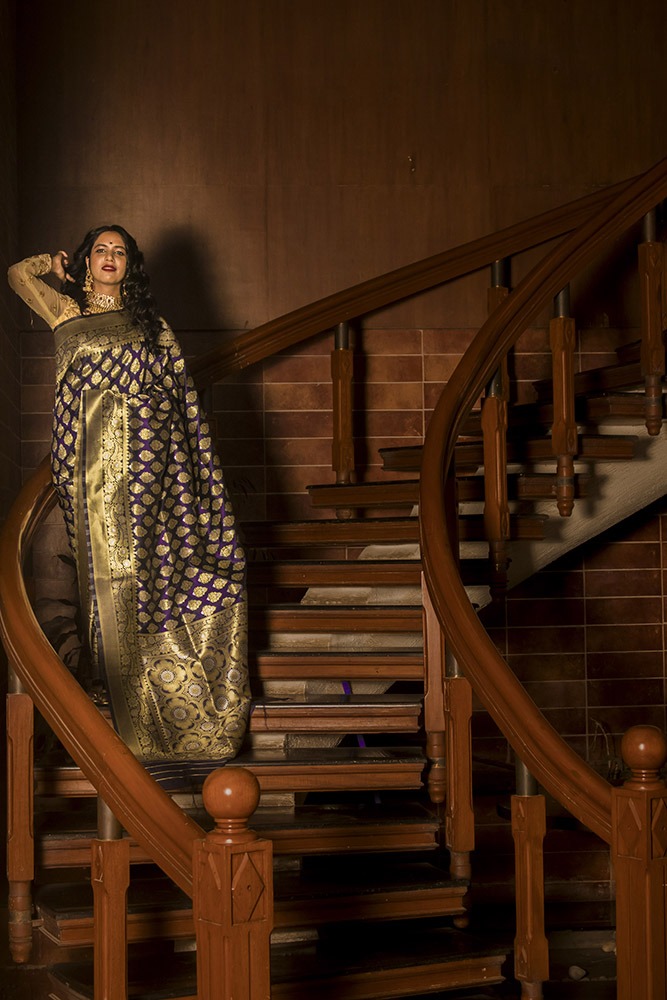
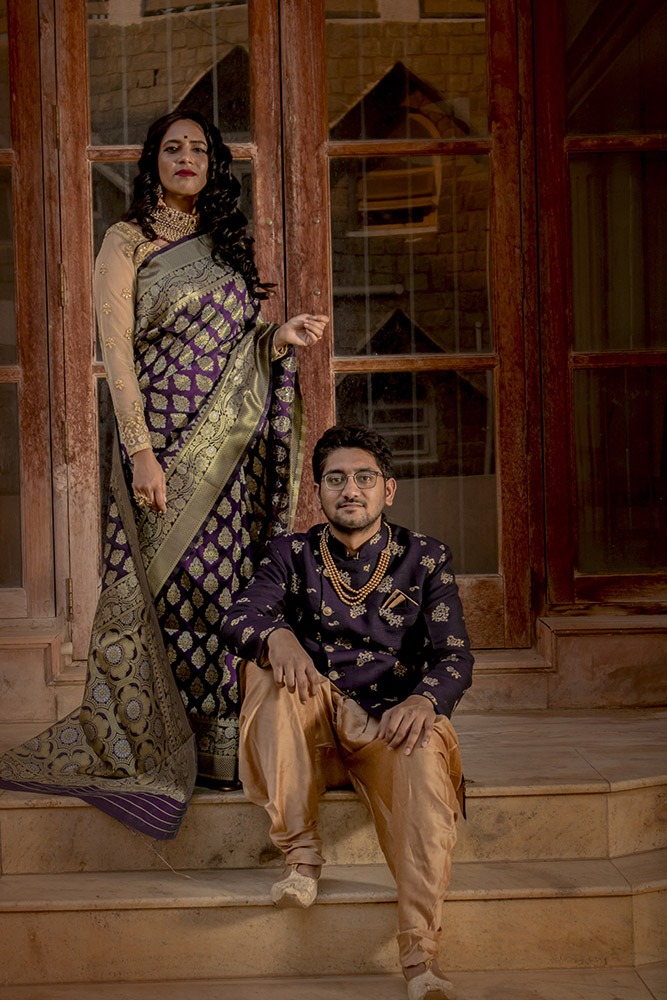
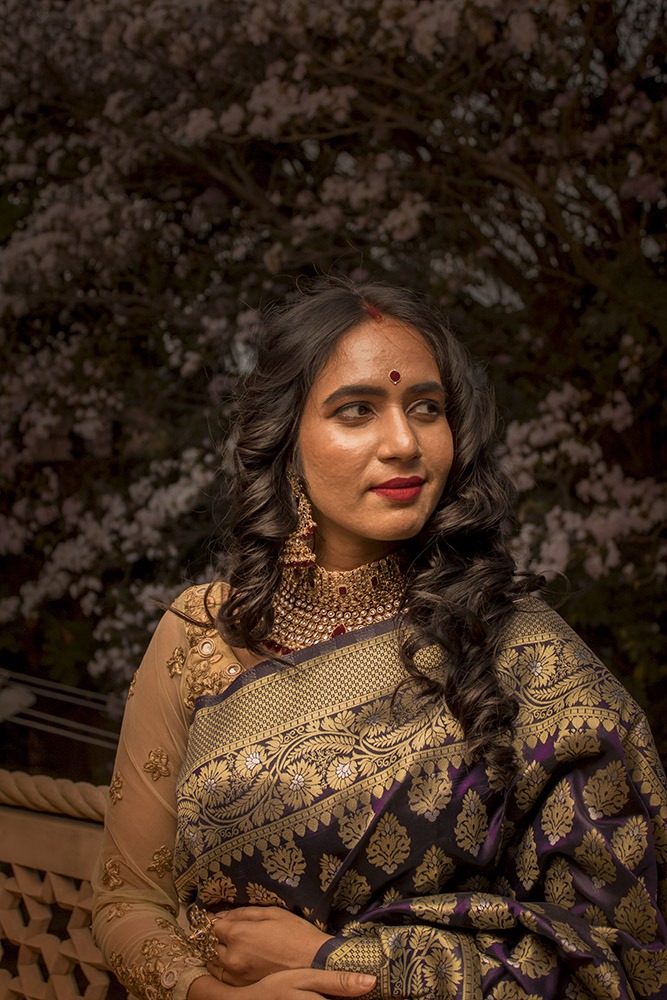

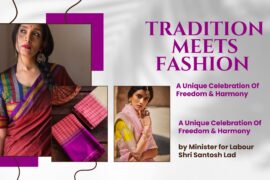
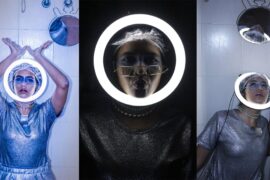
9 Comments
I loved this post, particularly the saree you wore, the Banarasi weave. Didn’t know that it was a world famous weave. The saree is indeed a mark of regality. And you’re right, it does bring out modern aesthetics while honoring royal Indian heritage.
Saree is so elegant wear and good to know history and facts attaches to it. Banarasi silk is surely a treasure to have it.
The moment this post was loaded I was like Woah such a diva, such amazing post and photoshoots
Nothing can be as elegant as wearing a saree. Glad to know a bit of history about the saree. So loved the pictures you have shared here.
I didn’t know that ancient people considered stitching of clothes impure. Now I know the reason for the existence of Saree and loincloth. This particular saree you are wearing, looks royal and beautiful. The color is so vibrant.
Such an amazing and informative blog about the sarees in general, Like it’s pretty amazing that we indian love to were sarees like every day and we love to were them a lot lately. Thank you for sharing this amazing blog with us.
Every woman look so beautiful in saree and Stunning photos you shared. Thanks for sharing….
Pingback: How did the Indian Saree Come into Existence ? – Featuring Julaaha – ColorMag
Thanks for the blog loaded with so much information. It’s really informative.
Sarees USA